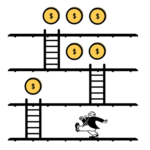User Experience through User Interface

User experience design has been the buzz word in the design and communications circle in the recent years. It has also gained acceptance as a practice, nowadays, across a number of interfaces such as websites, E-commerce platforms, project management systems and portals. The corporates are realizing the potential of user centric systems. A good experience does not result only in customer satisfaction, but brings more revenues and profits.
In the fiercely competitive market scenario, knowing your consumers and customers has gained utmost importance. On the other side, users are highly unpredictable as their needs are very dynamic under the influence of their environment. In order to acquire and keep such tricky audience, organizations have been putting their best to analyze the trends and patterns among users to create better experiences for them at every point of interaction – online as well as offline.
Discussion about user experience is incomplete without understanding the concept of user interface. An experience cannot be created if there is nothing connecting two sides or systems.
Let us understand user interface before we talk about how an experience is created through the user interface.
User Interface
An interface is a medium which connects two systems/products and facilitates interaction between them or it is a platform which facilitates communication between two or more systems.
User Interface is different from an interface as it connects the user and the system through which the user achieves a desired set of goals. The moment “user” gets connected to “interface”, the entire perspective changes from design to deployment of an interface.
User is Rational
The user is not a machine/ a robot. He has emotions, feelings and uses proper logic to arrive at a decision. During an interaction with the system, the user receives inputs using all his five senses and accordingly he responds. To design a user interface, application of cognitive ergonomics and science is one of the vital components as it involves receiving the information, processing it and transforming it into an action through the human mind.
There can be a number of stimuli for the users to trigger the thinking about a user interface, such as colors, audio, texture, etc. which must be pondered upon to create a better user experience. Human memory is sensitive to visuals, illustrations and animations and these are being applied to make the interface adapter for the users.
As per the Aesthetic-Usability effect - a UX law - any user interface which is visually appealing and aesthetic, is considered to be more usable. Hence aesthetics becomes the most crucial factor while creating a user interface.
States of User Interface
The user interface is not a system which throws few visuals at the front end and performs operation at the back-end. It is a system which changes its initial state as per the instructions given by the user. It makes the user perform a user journey to achieve his goals and based on that an experience is derived out of the interface.
Every screen, appearing on the interface corresponding to the actions performed by the user is a part of the user interface and considered as states of the interface. These states result in a user journey. The user journey cannot be simply created by understanding a few laws - it requires an understanding of human-machine interaction, cognitive science and laws of UX.
Conclusion
The user interface is not a mere screen or layout of few visuals, but it is a medium which connects the user and the system to achieve a certain set of objectives by performing the user journey. An interface cannot be created by empirical formula, but it requires a holistic understanding of the user and his interactions with the interface to produce the best user experience.
Recent Posts

Gamification of User Interface
Gamification of User Interface “A game is a problem-solving activity, approached with a playful attitude.” - Jesse Schell Gamification is the application of game elements in a non-gaming environment with the intent to motivate users and enhance users’ participation to achieve the desired goal. Gamification is achieved by taking the user experience, emotions…

Design Research
Design Research “Good design doesn't stem from intuition, talent, or luck (although I'll take a smidgen of each). It comes from research and understanding”.- Author: Anonymous Research is considered to be the foundation and one of the key steps in the design process. It consumes a significant amount of time to clarify the task…

Design Illustrations
Design Illustrations What are design illustrations? An illustration is a creative visual expression/interpretation/explanation of an idea/concept/emotion. We can relate illustrations with art/drawing. For example, the pictures carried in an article published in a periodical falls into the category of design illustrations. Difference between illustrations and graphic design The difference between design illustrations and…

User experience design has been the buzz word in the design and communications circle in the recent years. It has also gained acceptance as a practice, nowadays, across a number of interfaces such as websites, E-commerce platforms, project management systems and portals. The corporates are realizing the potential of user centric systems. A good experience does not result only in customer satisfaction, but brings more revenues and profits.
In the fiercely competitive market scenario, knowing your consumers and customers has gained utmost importance. On the other side, users are highly unpredictable as their needs are very dynamic under the influence of their environment. In order to acquire and keep such tricky audience, organizations have been putting their best to analyze the trends and patterns among users to create better experiences for them at every point of interaction – online as well as offline.
Discussion about user experience is incomplete without understanding the concept of user interface. An experience cannot be created if there is nothing connecting two sides or systems.
Let us understand user interface before we talk about how an experience is created through the user interface.
User Interface
An interface is a medium which connects two systems/products and facilitates interaction between them or it is a platform which facilitates communication between two or more systems.
User Interface is different from an interface as it connects the user and the system through which the user achieves a desired set of goals. The moment “user” gets connected to “interface”, the entire perspective changes from design to deployment of an interface.
User is Rational
The user is not a machine/ a robot. He has emotions, feelings and uses proper logic to arrive at a decision. During an interaction with the system, the user receives inputs using all his five senses and accordingly he responds. To design a user interface, application of cognitive ergonomics and science is one of the vital components as it involves receiving the information, processing it and transforming it into an action through the human mind.
There can be a number of stimuli for the users to trigger the thinking about a user interface, such as colors, audio, texture, etc. which must be pondered upon to create a better user experience. Human memory is sensitive to visuals, illustrations and animations and these are being applied to make the interface adapter for the users.
As per the Aesthetic-Usability effect - a UX law - any user interface which is visually appealing and aesthetic, is considered to be more usable. Hence aesthetics becomes the most crucial factor while creating a user interface.
States of User Interface
The user interface is not a system which throws few visuals at the front end and performs operation at the back-end. It is a system which changes its initial state as per the instructions given by the user. It makes the user perform a user journey to achieve his goals and based on that an experience is derived out of the interface.
Every screen, appearing on the interface corresponding to the actions performed by the user is a part of the user interface and considered as states of the interface. These states result in a user journey. The user journey cannot be simply created by understanding a few laws - it requires an understanding of human-machine interaction, cognitive science and laws of UX.
Conclusion
The user interface is not a mere screen or layout of few visuals, but it is a medium which connects the user and the system to achieve a certain set of objectives by performing the user journey. An interface cannot be created by empirical formula, but it requires a holistic understanding of the user and his interactions with the interface to produce the best user experience.
Recent Posts

Gamification of User Interface
Gamification of User Interface “A game is a problem-solving activity, approached with a playful attitude.” - Jesse Schell Gamification is the application of game elements in a non-gaming environment with the intent to motivate users and enhance users’ participation to achieve the desired goal. Gamification is achieved by taking the user experience, emotions…

Design Research
Design Research “Good design doesn't stem from intuition, talent, or luck (although I'll take a smidgen of each). It comes from research and understanding”.- Author: Anonymous Research is considered to be the foundation and one of the key steps in the design process. It consumes a significant amount of time to clarify the task…

Design Illustrations
Design Illustrations What are design illustrations? An illustration is a creative visual expression/interpretation/explanation of an idea/concept/emotion. We can relate illustrations with art/drawing. For example, the pictures carried in an article published in a periodical falls into the category of design illustrations. Difference between illustrations and graphic design The difference between design illustrations and…
CONTACT US
Follow Us





